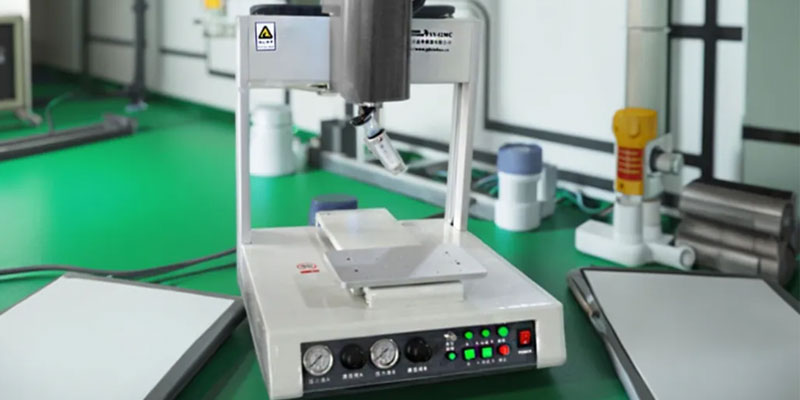Industrial glue dispensers are critical components in modern manufacturing processes, enabling precise adhesive application across numerous industries from electronics to automotive to medical devices. This guide provides a detailed exploration of different types of glue dispensing equipment, their applications, operational guidelines, and selection criteria to help you optimize your production processes.
Types of Glue Dispensing Equipment
Manual Glue Dispenser
Manual Glue Dispenser are basic, handheld tools that allow operators to apply adhesives by squeezing a trigger or pressing a button. These systems work through a flexible tube and pinch mechanism to control adhesive flow.
Manual dispensers come in several forms:
Glue Bottles: Available with or without tips, these bottles offer user-friendly options for adhesive application. Bottles with tips typically feature replaceable and interchangeable nozzles to achieve different dispense rates and precision levels.
Glue Syringes: These provide more precise application than bottles through a plunger system that pushes glue out in controlled amounts. They excel in applications requiring exact placement or small quantities, such as electronic assembly and jewelry making.
Glue Stick Dispensers: These work with solid adhesive sticks that are melted using heat during application and dispensed through a nozzle. They’re available in sizes compatible with various diameters of glue sticks
Manual Glue Dispenser offer several advantages:
- Low cost and simple design
- Easy to use and portable
- Suitable for low to medium-volume production
However, they have limitations:
- Limited precision and control over flow rate and pattern
- Not suitable for high-volume production
- Can cause operator fatigue during extended use
Automatic Dispensing Systems
- Automatic dispensers represent a significant upgrade from manual systems, offering greater precision and efficiency for industrial applications.
Benchtop Dispensers
- Pressure gauges showing the amount of pressure applied to the syringe
- Air pressure regulator controls for adjusting dispensing pressure
- Digital displays for programming information
- Programmable dispensing cycles for consistent application
Fully Automatic Systems
Fully automatic glue dispensers integrate advanced features:
- Compatibility with various adhesives including underfill glue, silica gel, silver paste, hot melt glue, UV glue, and three-proof glue
- Continuous path dispensing for consistent speed and direction
- Stable mechanical structures and screw drive designs ensuring accuracy
- Low liquid level alarms to prevent insufficient glue problems
- One-key correction features to minimize manual intervention
These sophisticated systems typically employ servo motors, high-definition industrial cameras, and specialized software platforms that allow for visual programming
Applications and Compatible Materials
Industrial glue dispensers handle a wide variety of materials:
- Acrylics and anaerobics
- Cyanoacrylates and epoxies
- Hot melts and greases
- Silicones and sealants
- UV-curable adhesives
- Threadlockers and retaining compounds
These systems are utilized across numerous industries:
- Electronics manufacturing
- Automotive assembly
- Medical device production
- Woodworking and construction
- Consumer product assembly
Selection Criteria for Industrial Glue Dispenser
When choosing a glue dispensing system, consider:
- Production volume requirements
- Required precision and consistency
- Types of adhesives to be used
- Available space and infrastructure
- Operator skill level
- Budget constraints
- Integration capabilities with existing production lines
Conclusion
Industrial glue dispensers represent essential technology for modern manufacturing processes, enabling precise adhesive application that improves product quality and production efficiency. By understanding the different types available, their operational requirements, and best practices for use, manufacturers can select and optimize dispensing systems that best match their specific needs.
As technology continues to evolve, we can expect even more sophisticated dispensing solutions with enhanced automation, improved precision, and greater integration with manufacturing intelligence systems.





